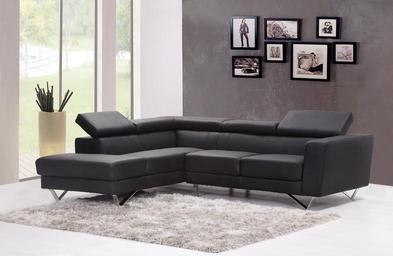Introduction
In today’s fast-paced world, our workspaces are no longer merely functional; they are extensions of our personalities and creative expressions. A modern office should be a place that inspires innovation and productivity while reflecting individual tastes. One of the most impactful ways to achieve this is through the strategic use of color and texture in artistic home decor.
Color has an undeniable influence on mood and perception, while texture adds depth and dimension to any space. This article delves into The Power of Color and Texture in Artistic Home Decor for Modern Offices, exploring how these elements can transform environments, enhance self-expression, and create inviting spaces.
The Power of Color and Texture in Artistic Home Decor for Modern Offices
When we talk about the power of color, we must acknowledge its psychological effects. Colors evoke emotions—blues can instill calmness, yellows can spark creativity, whereas reds may energize a space. Textures, on the other hand, play a vital role in creating tactile experiences that enrich our interactions with our environment.
Understanding Color Psychology in Office Decor
- Emotional Responses to Colors: Different colors trigger various emotional responses. For example: Blue: Often associated with tranquility and professionalism. Yellow: Stimulates creativity and joy. Green: Represents growth and balance. Choosing a Palette: The right color palette can set the tone for your workspace: Consider using complementary colors to create harmony. Use accent colors to highlight certain areas or artworks.
Texture's Role in Creating Depth
- Variety of Textures: Different textures can add layers to your decor: Soft Fabrics: Cushions or throws introduce warmth. Wood Elements: Bring earthiness and stability into a modern office. Metal Accents: Provide sleek contrast for contemporary designs. Combining Colors and Textures: The interplay between color and texture is essential: Balance smooth surfaces with rough textures for visual interest.
Transforming Environments Through Art
Art has the unique ability to transform environments by infusing them with personality and narrative.
Visual Storytelling in Design
- Every piece of art tells a story: Choose artworks that resonate with your brand or personal narrative. Incorporating local artists can add cultural significance to your office.
Creating Personal Spaces with Art
- Personalizing your workspace isn’t just about aesthetics; it’s about reflection: Curate an art collection that inspires you daily. Utilize aesthetic photos walls as focal points that reflect your journey or values.
Wall Art Placement Strategies
Where you place wall art can significantly affect how it’s perceived.
Key Principles for Wall Art Placement
Eye Level Is Key: Hang artwork at eye level for maximum impact. Group Similar Pieces: Create a gallery wall by grouping similar works together. Balance Is Essential: Distribute art evenly throughout the room to maintain visual balance.Large Canvas Hanging Tips
For those opting for large canvas artworks:
- Ensure it doesn’t overwhelm the room; balance it with lighter furnishings. Consider spacing between pieces if creating a series on one wall.
Mood Creation in Spaces
A well-decorated office should evoke specific moods conducive to work.
Using Color Schemes to Influence Mood
Bright colors can energize teams during brainstorming sessions. Soft hues facilitate focus during tasks requiring concentration.Textures That Enhance Mood
Textured elements such as rugs or acoustic panels not only improve aesthetics but also reduce noise distractions—crucial in open-plan offices.
Reflection Through Interiors
Your office decor serves as a reflection of your identity—embracing this concept allows you to curate spaces that resonate deeply with you.
Self-Expression Through Decor
Artistic home decor allows individuals to express their preferences:
- Select pieces that speak directly to who you are personally or professionally.
Curating Your Personal Sanctuary at Work
Designate an area within your workspace as a personal sanctuary:
- Include elements like plants, comfortable seating, or inspiring books alongside wall art for relaxation breaks.
Interior Decor Inspiration from Various Styles
Finding inspiration from different decor styles enables us to combine modern and traditional elements effectively.
Modern vs Traditional Styles in Office Decor
| Style | Characteristics | Best Uses | |----------------|------------------------------------------------------|--------------------------------| | Modern | Minimalist lines, https://reflectionslab240.exposure.co/upgrading-your-home-aesthetic-with-thoughtful-art-choices?source=share-reflectionslab240 bold colors | Contemporary offices | | Traditional | Rich colors, ornate details | Formal settings |
By understanding these characteristics, you can better blend styles within your space while maintaining coherence.
Combining Colors and Textures Effectively
Mastering the combination of colors and textures brings vibrancy into any workspace:
Tips for Harmonizing Elements
Start with a base color—create depth by adding complementary hues. Introduce contrasting textures (like glass vs wood) for dynamic visuals.FAQs
What are some good color choices for a modern office?
Good choices include blues for calmness, greens for balance, or yellows for creativity depending on desired atmosphere.
How do I choose artwork that fits my office?
Select pieces that reflect personal values or brand identity; consider local artists' work for authenticity.
What is an aesthetic photo wall?
An aesthetic photo wall is a curated display featuring photos or artwork that resonate emotionally or visually with viewers.
How high should I hang my wall art?
Aim for eye level—typically around 57 inches from the floor is recommended for optimal viewing experience.

Can I mix different art styles?
Absolutely! Mixing styles adds character but ensure there’s cohesion through color palettes or themes used across pieces.
How often should I refresh my office decor?
Consider refreshing every season or when embarking on new projects—staying inspired is key!
Conclusion
The integration of color and texture plays an indispensable role in shaping modern offices into spaces that inspire creativity and comfort. By thoughtfully incorporating artistic home decor elements like wall art placement strategies, personal touches through aesthetic photos walls, and balancing modernity with tradition through careful selection processes, one can truly harness the power of design.
As we’ve explored throughout this article on The Power of Color and Texture in Artistic Home Decor for Modern Offices, our environments profoundly affect our emotions, productivity levels, and overall well-being—a compelling reason why investing time into thoughtful design choices is paramount. Transforming environments begins with understanding these principles; take charge today!